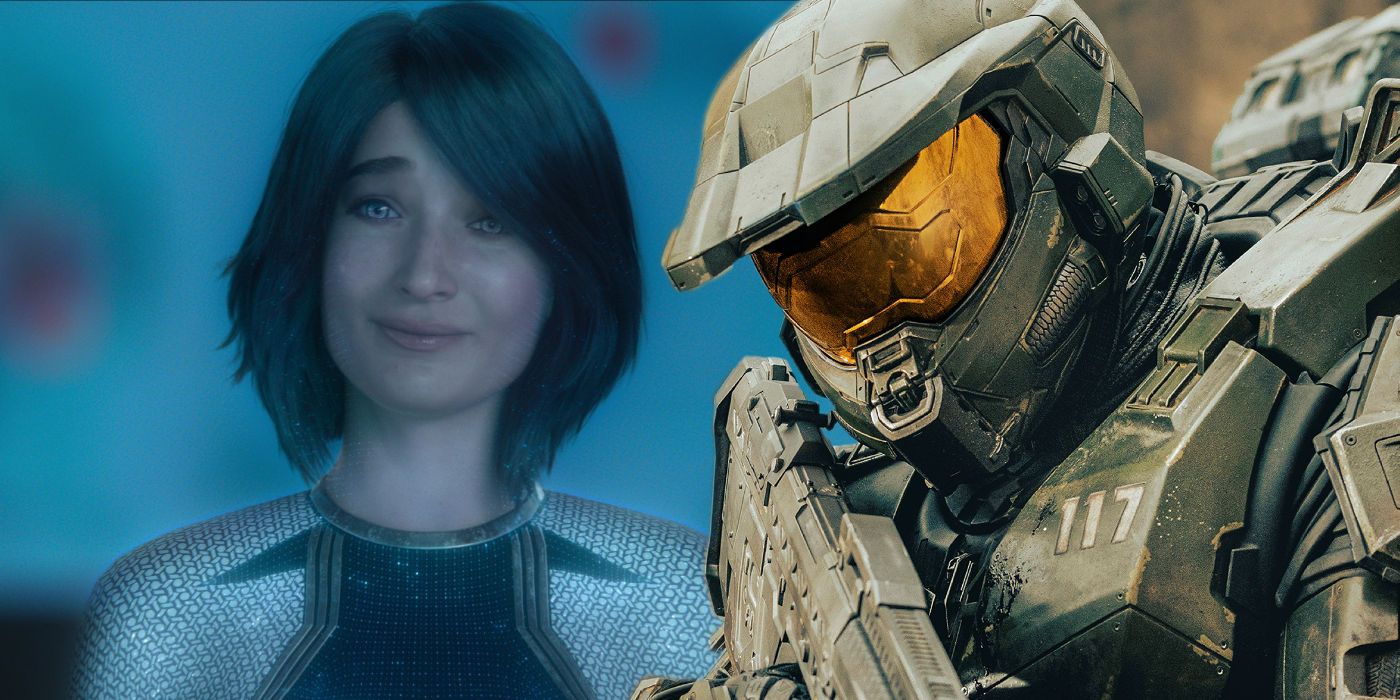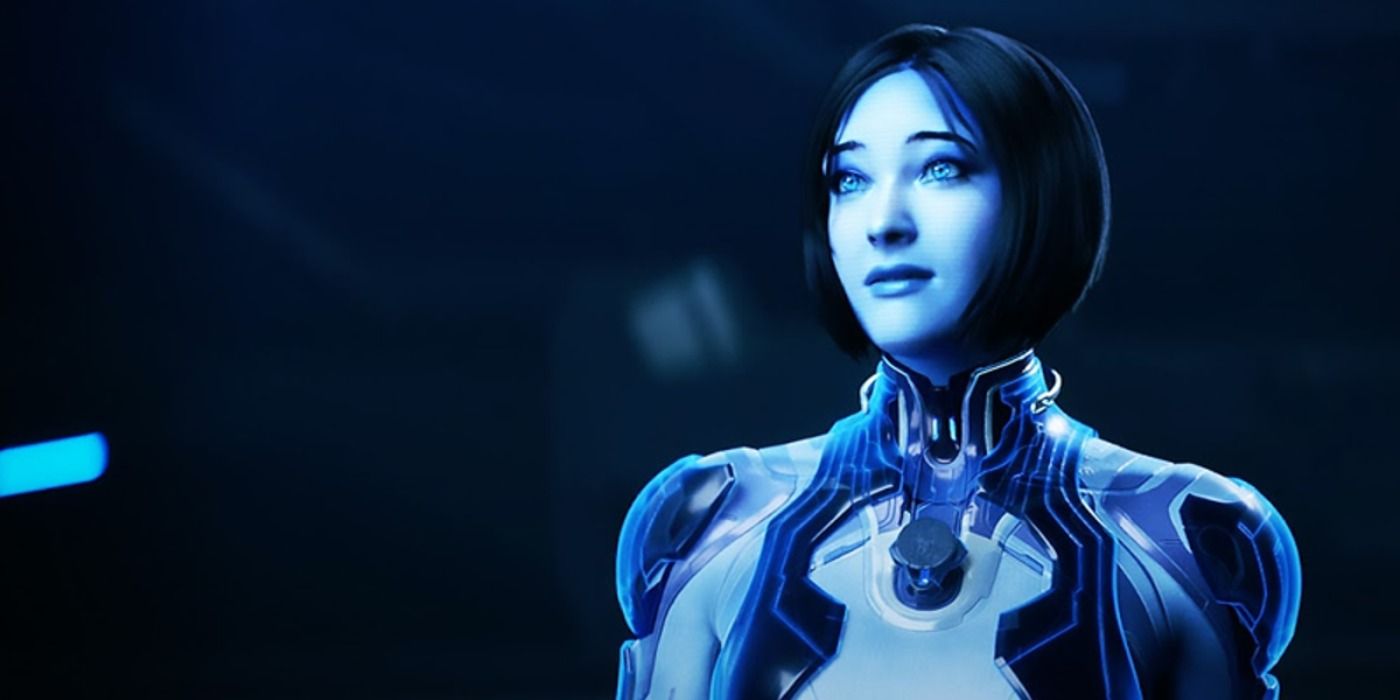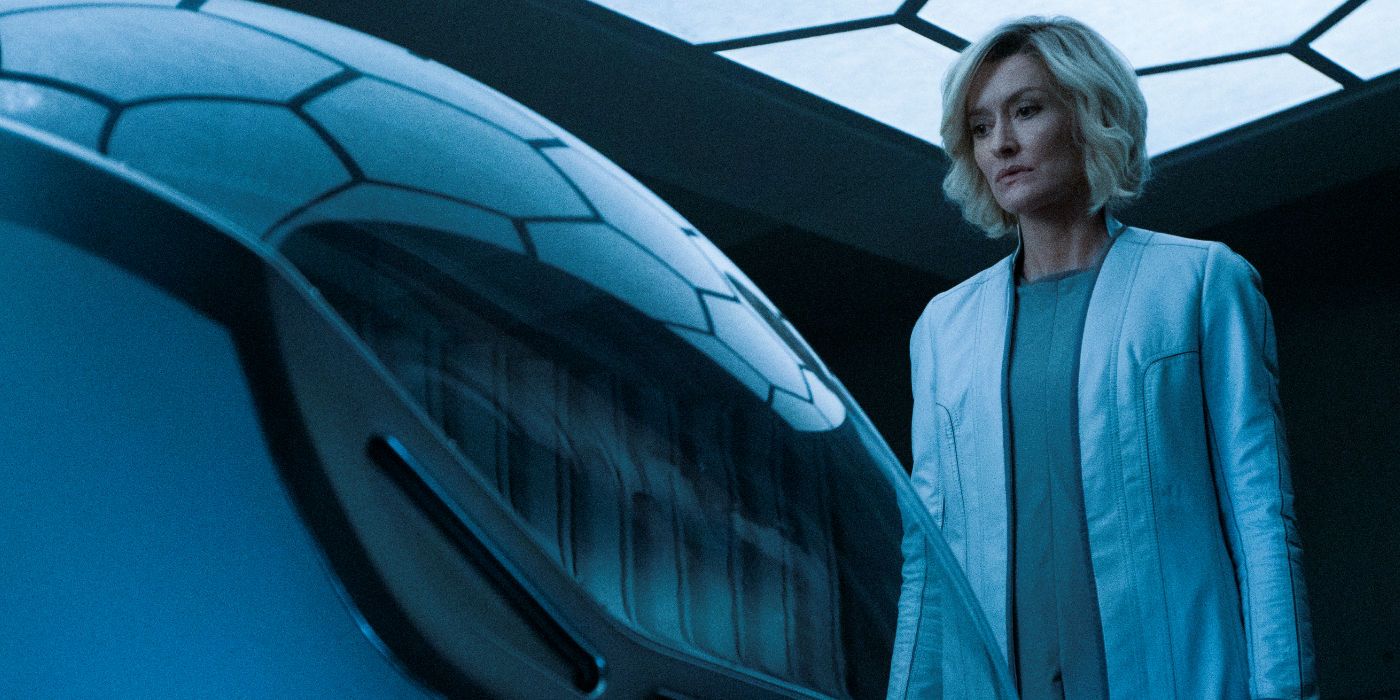This article contains spoilers for Halo episode 1.
Halo episode 1 seemed to introduce its version of Cortana, Master Chief's AI - but it's likely to instead be just another step on the road to fashioning her. A live-action adaptation of the Halo games has been in the works since 2005, but it's finally become a reality. On the face of it, Paramount+'s TV adaptation is remarkably faithful to the original games, with the newly-created "Silver Timeline" - named after Master Chief's new Spartan team - hewing close to the established lore from games and tie-ins.
At first glance, one exception appears to be Cortana, the Master Chief's AI. She's clearly set up in Halo episode 1, with Dr. Catherine Halsey - creator of the Spartan program - apparently conducting further illegal and unethical experiments. In one key scene, Dr. Halsey and Admiral Parangosky looking in a chamber at a female body that's being monitored. The woman's mind appears to be being monitored by some sort of sophisticated scanning system. Halsey is told to discontinue the experiments, but it's clear she has no intention of following Admiral Paragosky's orders.
The scene feels like setup for the Cortana AI, who is otherwise absent in Halo episode 1. Many viewers are likely to be somewhat surprised by this, though, because at first glance it appears to be suggesting Cortana began as an organic being. In reality, though, this isn't Cortana at all - it's a deep-dive into Halo lore.
How Cortana Was Created In The Halo Video Games
In the original Halo game timeline, Cortana's backstory is revealed in a series of audio files and Easter eggs. Like the Spartans, she was created by Dr. Halsey, but she was far more than a standard artificial intelligence. Dr. Halsey wished to model Cortana on her own brain using a technique called Cognitive Impression Modelling. Unfortunately, CIM is a dangerous process, because the original brain - referred to as a "donor" - is destroyed. Unwilling to die to create an AI, and frankly imagining making many AIs based on her own consciousness, Dr. Halsey found a way around CIM's limitations using cloning.
In the Halo universe, flash cloning is typically used as a medical treatment. An individual organ or body part is cloned, with the duplicate undergoing an accelerated ageing; it's a smart way of creating a replacement body part, which can then be transplanted without fear of rejection. It is possible, however, to flash clone an entire human body; the process is dangerous, with the clones degenerating and typically dying within a year. Curiously - and, frankly, inexplicably - flash cloning of a human brain appears to leave the duplicate possessing all the memories of the original. Dr. Halsey had worked with flash cloning before; she'd chosen her Spartan candidates when they were just children, and abducted many from their families, replacing them with flash clones who died within a year. This is the disturbing origin of the Master Chief and his fellow Spartans - and it served as inspiration for Dr. Halsey as she struggled to create Cortana. She created a flash clone of herself to serve as the basis for an AI.
The experiment was completely illegal - but that had never stopped Dr. Halsey before. It was also a very risky procedure, combining two dangerous and complicated techniques. Dr. Halsey attempted to create over 20 of these AIs, but only managed to fashion two; Cortana and another named Kalmiya, her predecessor. Halsey intended to bond this new AI with a Spartan, and gave Cortana the choice of who she wanted to connect to. "You know me," Cortana eventually told John-117. " did my research. Watched as you became the soldier we needed you to be. Like the others, you were strong and swift and brave. A natural leader. But you had something they didn't. Something no one saw, but me. Can you guess...? Luck."
Cortana's Origin & Dr. Halsey's Flash Clone Body In Halo Episode 1
Paramount+'s Halo TV series is set before the Fall of Reach, at a time when the UNSC is still learning about the alien Covenant threatening to wipe out the entire human race. The first episode sees John-117 recover a Forerunner artifact, one that seems to have the potential to lead the Master Chief to the very first Halo Ring. But in addition, the Dr. Halsey subplot seems to secretly be about the creation of Cortana. That would explain exactly what's happening in the strange scene in Halo episode 1; the woman's body is a flash clone of Dr. Halsey, and the procedure being conducted on her isn't just a scan of her brain - it's Cognitive Impression Modelling, with Halsey creating an artificial intelligence based on the clone brain. This is presumably highly illegal, just as in the original Halo timeline, explaining Admiral Parangosky's objections.
It's interesting to note that AIs in general seem to be a lot less common in the so-called Silver Timeline. In the original timeline, the planet Reach was maintained by smart AIs, but there's no hint of them working alongside ONI and the UNSC in Halo episode 1. It's possible the limitations of Cognitive Impression Modelling have meant precious few smart AIs have been created before now, and Cortana really is a leap forward for the science. Indeed, that may well explain the strength of Admiral Parangosky's complaints against Dr. Halsey; once again Halsey is pushing the boundaries of science, going beyond anything that has been seen before, attempting to create the first generation of smart artificial intelligences just as she had created the next step of human evolution in the Spartans.
All this means Halo is yet to reveal its Cortana in all her glory. Indeed, it's quite possible Halo season 1 will not just see Cortana created - but also see her evolve. This may well explain why promotional shots have teased Cortana without her characteristic blue energy flare, simply because that has yet to manifest. Cortana is a work in progress, yet to truly be born, yet to become the sophisticated character fans of the Halo franchise are familiar with. Presumably she'll become more recognizable by the end of the series.



